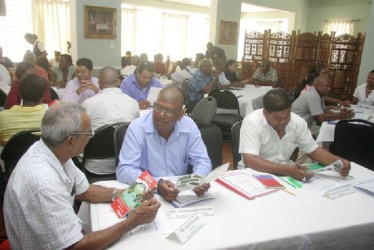A monitoring and evaluation forum yesterday heard that 212 roads have been completed under a Caribbean Development Bank-funded programme.
The Ministry of Housing and Water in collaboration with the Local Government Ministry hosted the forum to analyse fndings of the mid-term evaluation of the US$18.7M Community Roads Improvement Programme (CRIP).
According to the Government Information Agency, the evaluation was undertaken by Consultant, Erica Rapier, who was taken on in 2011 to develop a comprehensive monitoring and evaluation system for the programme.
The project is being implemented by the Ministries of Housing and Water and Local Government and Regional Development.
CRIP’s Project Coordinator, Karen Roopchand explained that the Housing Ministry has added to its agenda, CRIP, to ensure that infrastructure in existing areas is on par with the new development.
GINA said that sustainability is a key consideration under the CRIP and one of its major components is the improvement of the Neighbourhood Democratic Councils (NDCs) and Regional Democratic Councils (RDCs) which are the institutions responsible for maintaining the infrastructure.
The NDCs in particular have been weakened by the absence of local government elections. These were last held in 1994.
In addition to the rehabilitated roads, GINA said NDC and RDC staff are trained under the CRIP in areas such as administration and finance, information technology, service delivery and governance.
Staff has been trained in road maintenance, and ICT management systems have been delivered to all 12 NDCs. GINA said that the buildings

that house the staff at these NDCs have all been either rehabilitated or constructed where necessary.
Minister of Housing Irfaan Ali disclosed that the Government is working towards the realisation of CRIP 2.
According to GINA, the consultant presented an overview and summary of the findings and achievements of the monitoring and evaluation system. She stressed that a sound monitoring mechanism is critical in the rehabilitation and maintenance of road networks.
According to Rapier’s findings, of the 218 roads, 212 have been completed as of April this year, or 97%. Further, rehabilitation and construction has been executed on 11 buildings of the identified 12 buildings, and 100 percent completion of the road maintenance training.
In total, CRIP would be rehabilitating over 100 kilometres of roads in Regions Three, Four, and Six. This includes the rehabilitation of drains, culverts, and bridges and the provision of safety features such as signage, road markings and speed humps.




